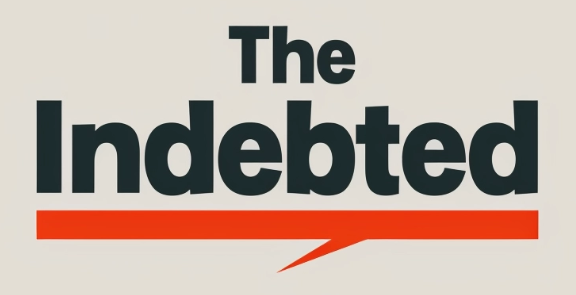Setting achievable financial goals when you’re in debt can be a daunting task. It’s easy to feel overwhelmed and discouraged, especially when you’re dealing with high-interest debt and limited income. However, it’s important to remember that setting financial goals is the first step towards getting out of debt and achieving financial freedom.
The key to setting achievable financial goals when you’re in debt is to start small and be realistic. Don’t set goals that are too lofty or unrealistic, as this will only lead to frustration and disappointment. Instead, focus on small, achievable goals that will help you build momentum and stay motivated. For example, setting a goal to pay off a small credit card balance or save $50 a month can be a great way to start building momentum and making progress towards your larger financial goals.
Creating a budget and a plan is also essential when setting achievable financial goals. A budget will help you understand where your money is going and identify areas where you can cut back on expenses. With a plan in place, you can start working towards your financial goals and make progress towards becoming debt-free. Remember, setting achievable financial goals takes time and effort, but with dedication and persistence, you can achieve financial freedom and live the life you want.
Understanding Your Financial Situation
When setting achievable financial goals while in debt, it’s essential to start by understanding your financial situation. This step is crucial because it helps you identify your financial strengths and weaknesses, which will guide you in setting realistic goals.
Assessing Your Debt
The first step in understanding your financial situation is assessing your debt. You need to know how much you owe, to whom, and at what interest rate. Create a list of all your debts, including credit card balances, personal loans, car loans, and any other outstanding debts.
Once you’ve listed all your debts, prioritize them based on the interest rate and the amount owed. High-interest debts such as credit card balances should be your priority because they accrue interest quickly and can quickly spiral out of control.
Analyzing Your Income and Expenses
After assessing your debt, the next step is to analyze your income and expenses. You need to know how much money you have coming in and how much is going out.
Start by listing all your sources of income, including your salary, bonuses, and any side hustles. Next, list all your expenses, including rent/mortgage, utilities, groceries, transportation, and any other bills.
Once you’ve listed all your income and expenses, create a budget that takes into account your debt repayment plan. A budget will help you track your spending and ensure that you’re not overspending.
Analyzing your income and expenses will also help you identify areas where you can cut back on expenses. For example, you can reduce your grocery bill by meal planning, or you can save on transportation costs by carpooling or using public transportation.
In conclusion, understanding your financial situation is the first step in setting achievable financial goals while in debt. Assessing your debt and analyzing your income and expenses will help you identify your financial strengths and weaknesses, which will guide you in setting realistic goals.
Setting SMART Financial Goals
When you’re in debt, setting financial goals can help you get out of it. However, it’s important to set SMART goals. SMART stands for Specific, Measurable, Achievable, Relevant, and Time-Bound. Here are some tips to help you set SMART financial goals.
Defining Specific and Measurable Goals
The first step in setting SMART financial goals is to define specific and measurable goals. This means setting goals that are clear and easy to measure. For example, instead of setting a goal to “save money,” set a goal to “save $500 per month.” This goal is specific and measurable, making it easier to track progress.
Ensuring Goals Are Achievable and Relevant
The next step is to ensure that your goals are achievable and relevant. This means setting goals that are realistic and relevant to your financial situation. For example, if you’re in debt, setting a goal to pay off all your debt in a month is not achievable or relevant. Instead, set a goal to pay off a certain amount of debt each month.
Setting Time-Bound Objectives
The final step is to set time-bound objectives. This means setting goals that have a specific timeframe. For example, instead of setting a goal to “save $500,” set a goal to “save $500 in six months.” This makes the goal time-bound and gives you a deadline to work towards.
By setting SMART financial goals, you can make progress towards your financial goals even when you’re in debt. Remember to define specific and measurable goals, ensure goals are achievable and relevant, and set time-bound objectives. With these tips, you’ll be on your way to achieving your financial goals.
Creating a Strategic Debt Repayment Plan
When you’re in debt, it can be overwhelming to know where to start. Creating a strategic debt repayment plan can help you prioritize your debts and develop a plan to pay them off systematically. Here are some steps to help you create a debt repayment plan that works for you.
Prioritizing High-Interest Debt
The first step in creating a debt repayment plan is to prioritize your debts. Start by listing all of your debts, including credit card debt, student loans, and any other loans you may have. Once you have a list of your debts, prioritize them based on the interest rate. High-interest debt, such as credit card debt, should be your top priority.
The reason for prioritizing high-interest debt is that it can quickly spiral out of control if left unchecked. High-interest debt can quickly accumulate, making it difficult to pay off. By prioritizing high-interest debt, you can save money on interest charges and pay off your debts faster.
Exploring Debt Repayment Methods
Once you have prioritized your debts, it’s time to explore debt repayment methods. There are two popular methods for debt repayment: the debt avalanche method and the debt snowball method.
The debt avalanche method involves paying off your debts in order of highest to lowest interest rate. This method can save you money on interest charges in the long run, but it may take longer to see progress on your debts.
The debt snowball method involves paying off your debts in order of smallest to largest balance. This method can provide a sense of accomplishment as you pay off your debts, but it may not save you as much money on interest charges.
Ultimately, the debt repayment method you choose will depend on your personal preferences and financial situation. You may also want to consider debt consolidation or seeking the help of a financial advisor.
Creating a strategic debt repayment plan can help you take control of your finances and achieve your financial goals. By prioritizing high-interest debt and exploring debt repayment methods, you can develop a plan to pay off your debts systematically and achieve financial freedom.
Budgeting for Success
When in debt, setting achievable financial goals is essential to managing your finances. One of the best ways to achieve your financial goals is to create a budget. A budget is a plan that helps you allocate your funds for savings and expenses.
Allocating Funds for Savings and Expenses
Allocating funds for savings and expenses is important to achieving your financial goals. One way to do this is by creating a budget that includes your income, expenses, and savings. To create a budget, you should start by tracking your spending. This will help you understand where your money is going and where you can cut back.
Once you have an idea of your spending, you can start allocating funds for savings and expenses. You should aim to save a certain percentage of your income each month. This will help you build up your savings account and prepare for unexpected expenses.
Utilizing Budgeting Tools and Apps
Utilizing budgeting tools and apps can help you manage your finances more efficiently. There are many budgeting tools and apps available that can help you track your spending, create a budget, and monitor your progress. One popular budgeting app is Mint. Mint allows you to track your spending, create a budget, and monitor your progress all in one place.
Another budgeting tool is a spreadsheet. A spreadsheet can help you create a budget and track your spending. You can create a spreadsheet using Microsoft Excel or Google Sheets.
In conclusion, creating a budget is essential to achieving your financial goals. Allocating funds for savings and expenses and utilizing budgeting tools and apps can help you manage your finances more efficiently. By tracking your spending and creating a budget, you can take control of your finances and work towards a debt-free future.
Planning for the Future While Paying Down Debt
As someone who is currently in debt, it can be difficult to think about planning for the future. However, it’s important to remember that while paying down debt is a priority, it shouldn’t come at the expense of planning for your financial future. In this section, I will discuss three important areas to focus on when planning for the future while paying down debt: saving for retirement, building an emergency fund, and investing in your future.
Saving for Retirement
One of the most important things you can do for your financial future is to start saving for retirement. Even if you’re in debt, it’s important to start putting money away for retirement as early as possible. One way to do this is by contributing to an Individual Retirement Account (IRA) or a 401(k) plan if it’s offered by your employer.
By contributing to a retirement account, you’re not only saving for your future, but you’re also taking advantage of the power of compound interest. Over time, your contributions will grow and you’ll be able to enjoy the benefits of a comfortable retirement.
Building an Emergency Fund
Another important area to focus on when planning for the future is building an emergency fund. An emergency fund is a savings account that is specifically set aside to cover unexpected expenses, such as car repairs or medical bills.
When you’re in debt, it can be tempting to put all of your extra money towards paying off your debt. However, it’s important to have an emergency fund in place to avoid going further into debt when unexpected expenses arise. Aim to have at least three to six months’ worth of living expenses saved in your emergency fund.
Investing in Your Future
Finally, it’s important to invest in your future by continuing to learn and grow in your career. This could mean taking classes to improve your skills, attending conferences to network with others in your industry, or even starting your own business.
Investing in yourself and your future can help you increase your earning potential and achieve your long-term financial goals. While it may seem like a daunting task when you’re in debt, remember that the investment you make in yourself today can pay off in big ways down the road.
In conclusion, while it’s important to focus on paying down debt, it’s equally important to plan for your financial future. By saving for retirement, building an emergency fund, and investing in your future, you can set yourself up for long-term financial success.





